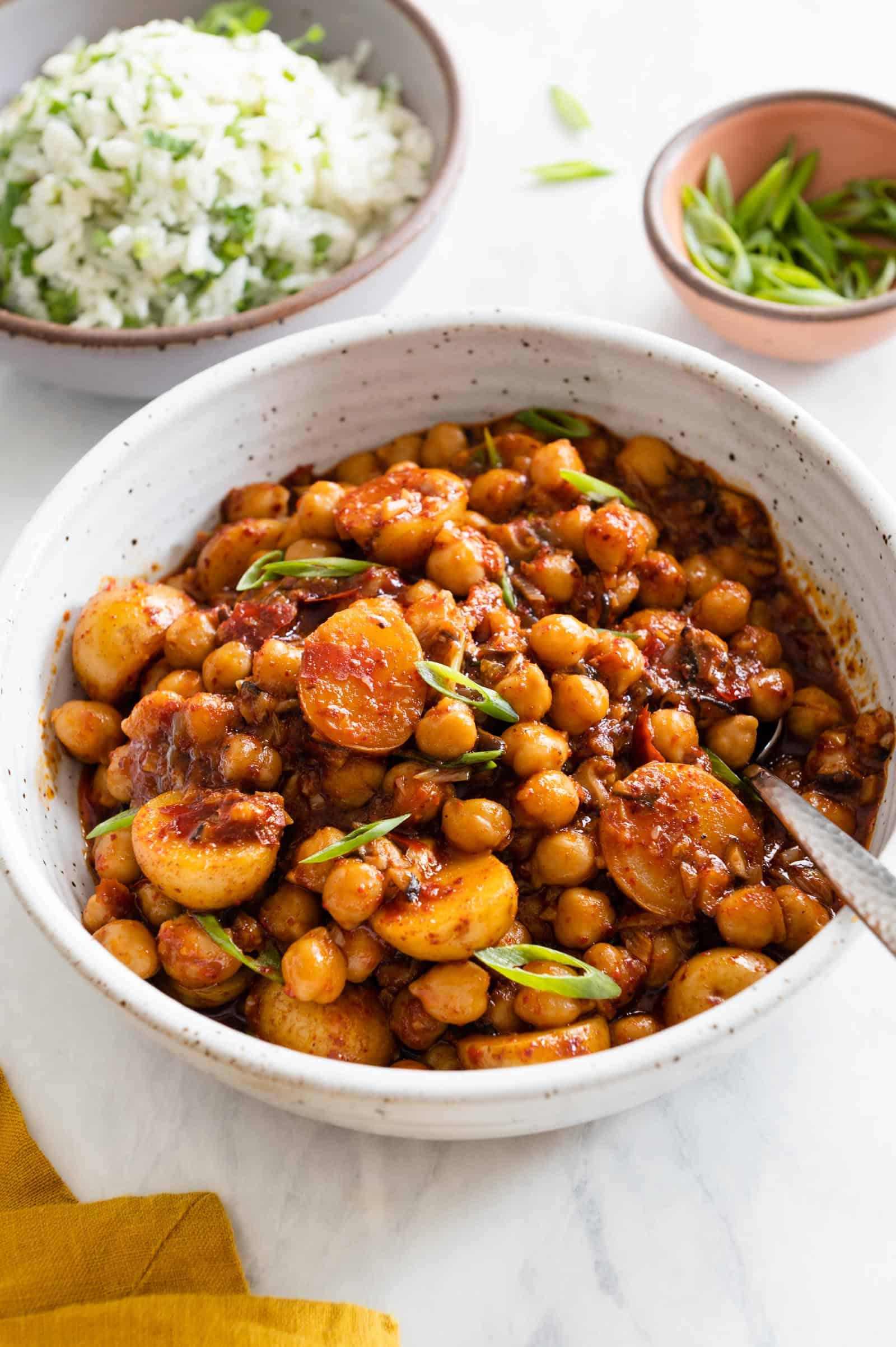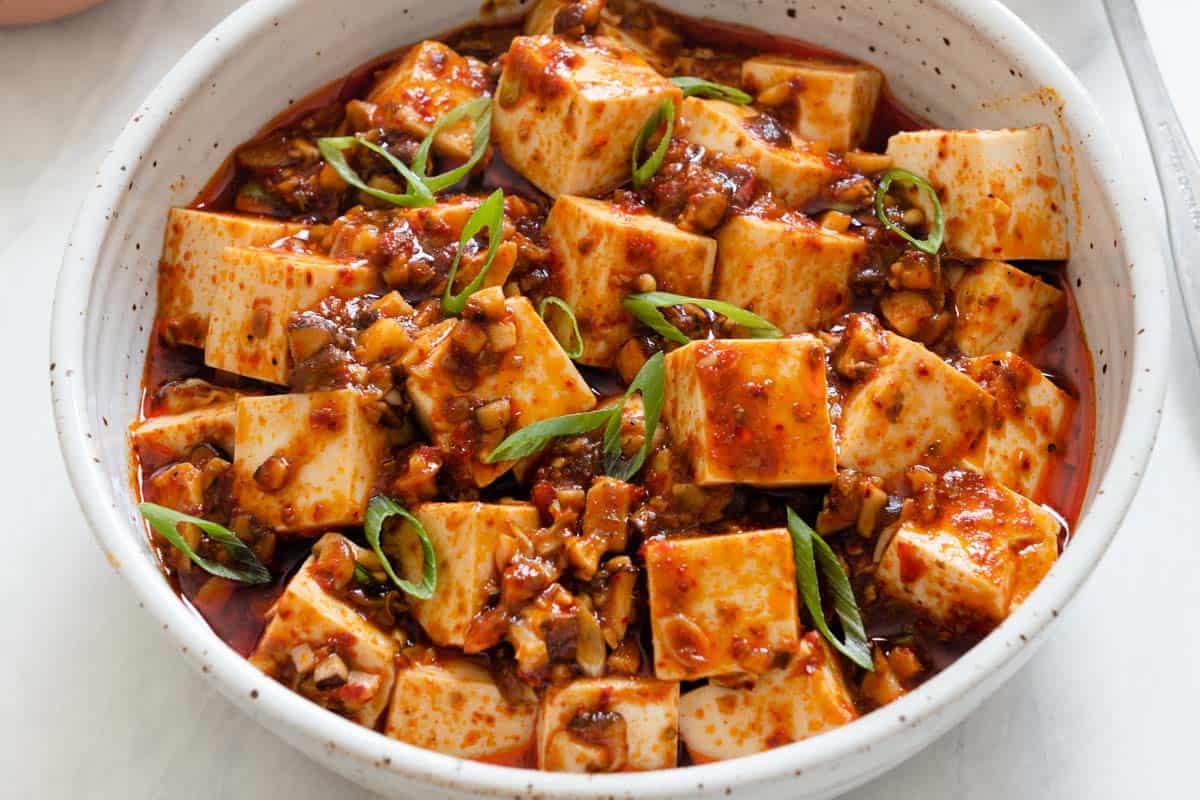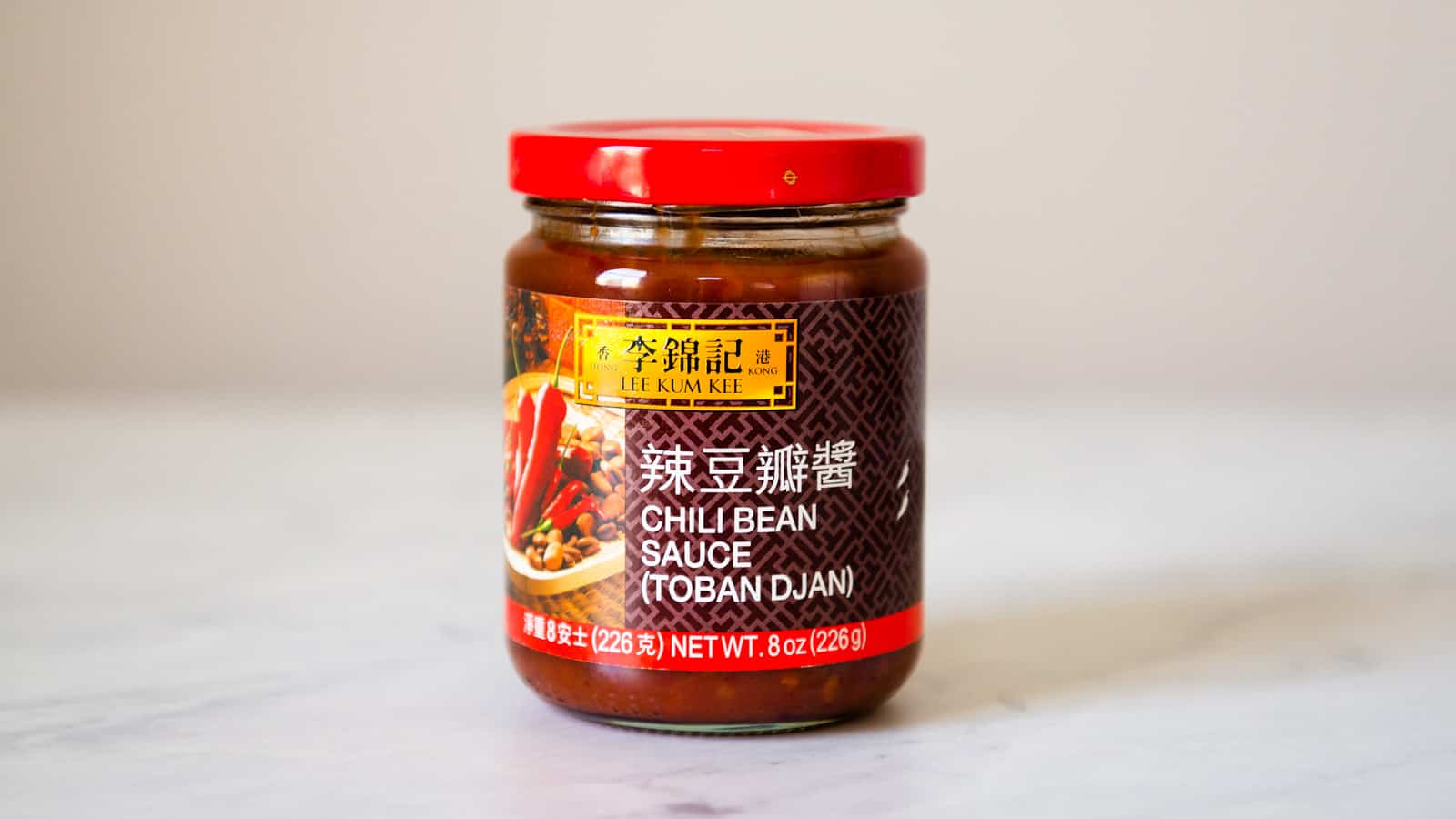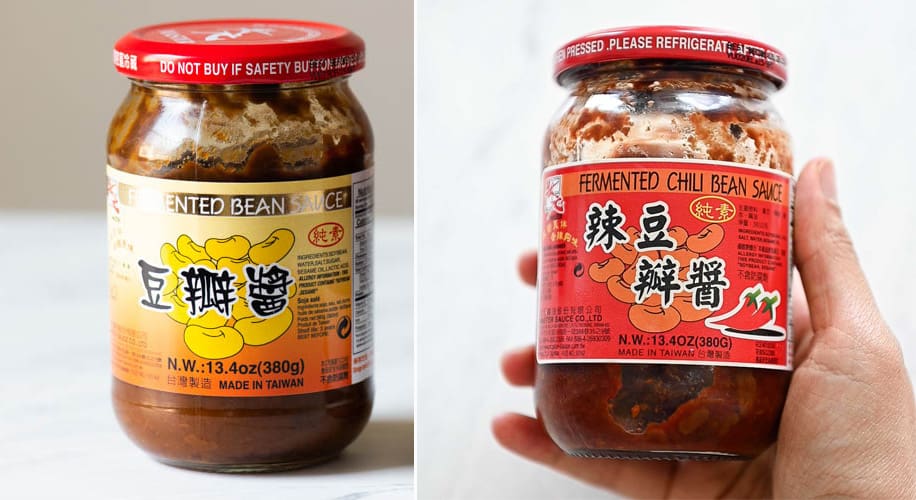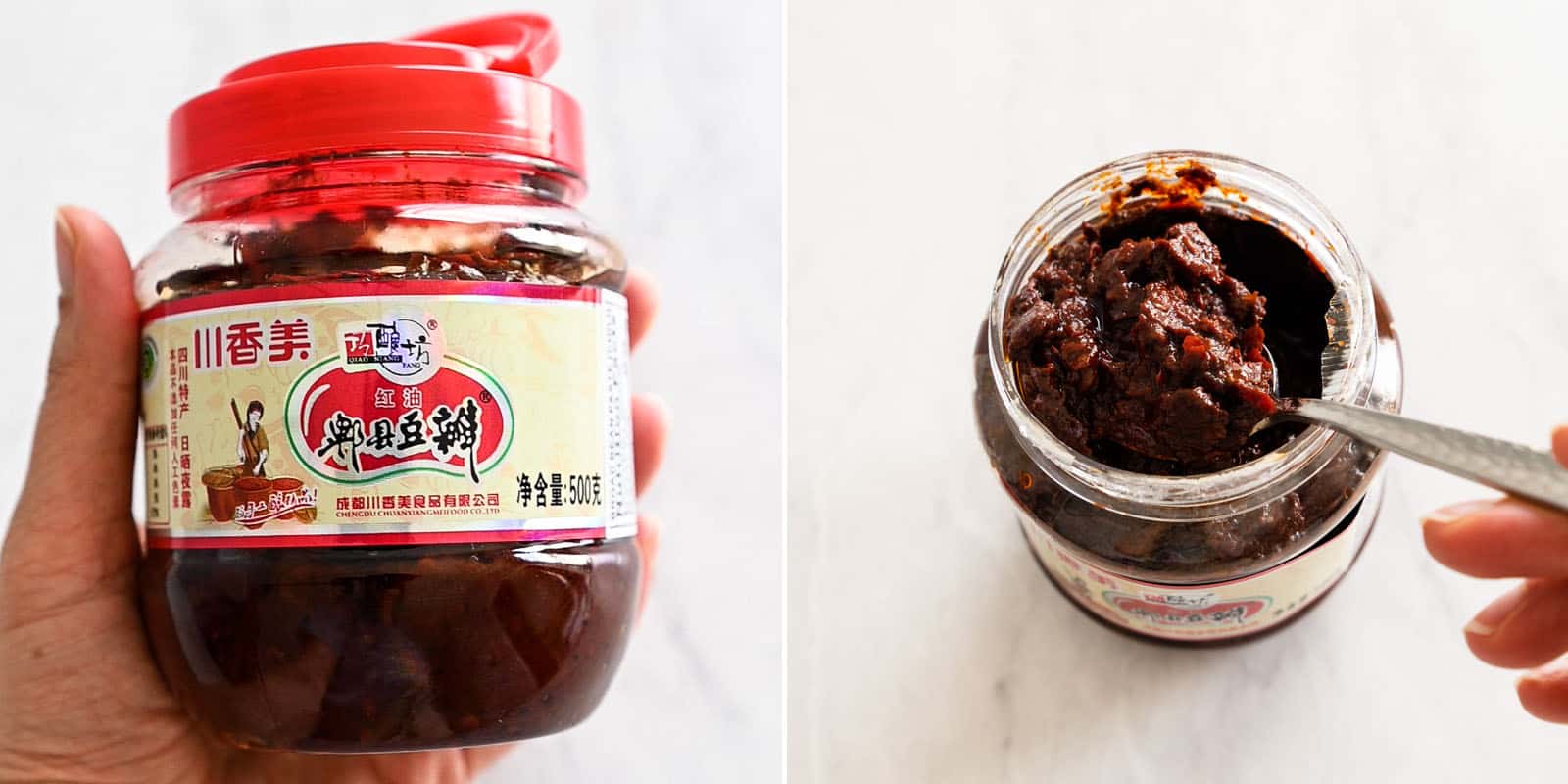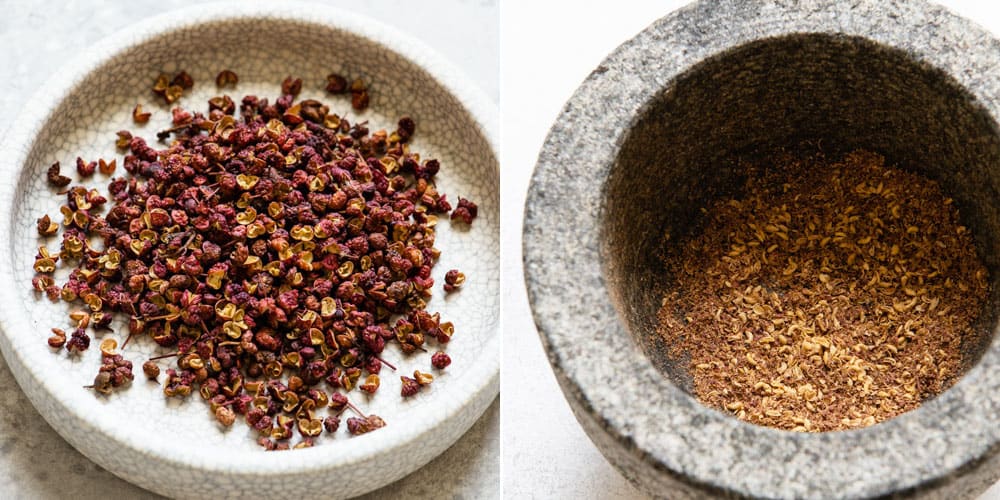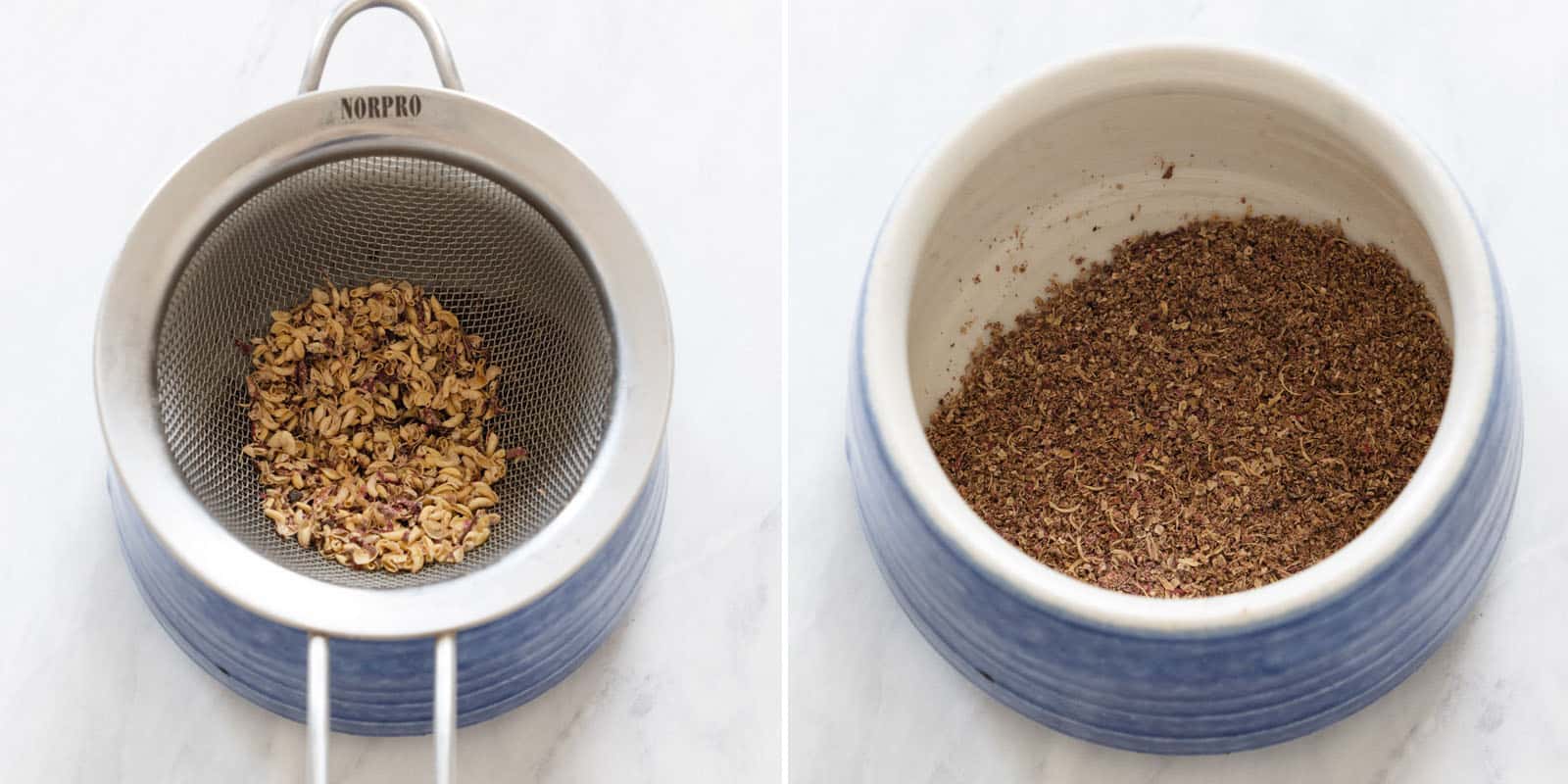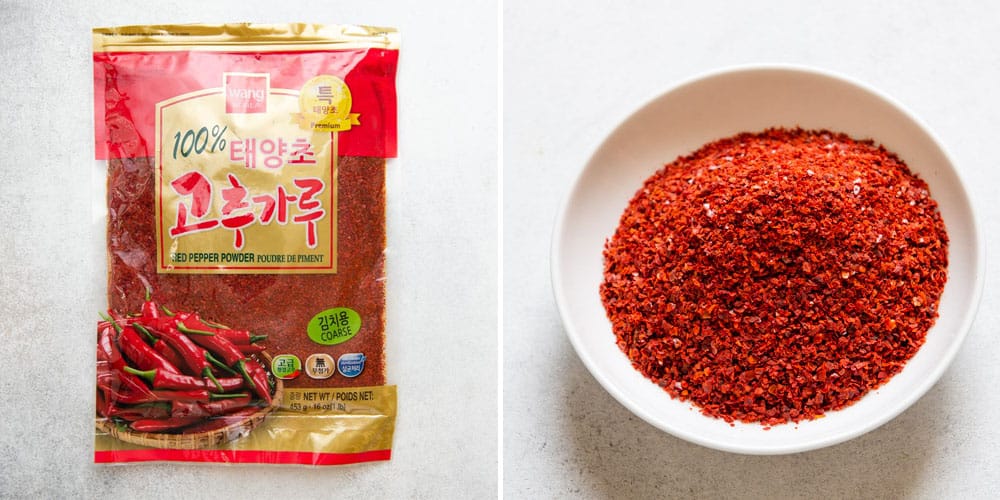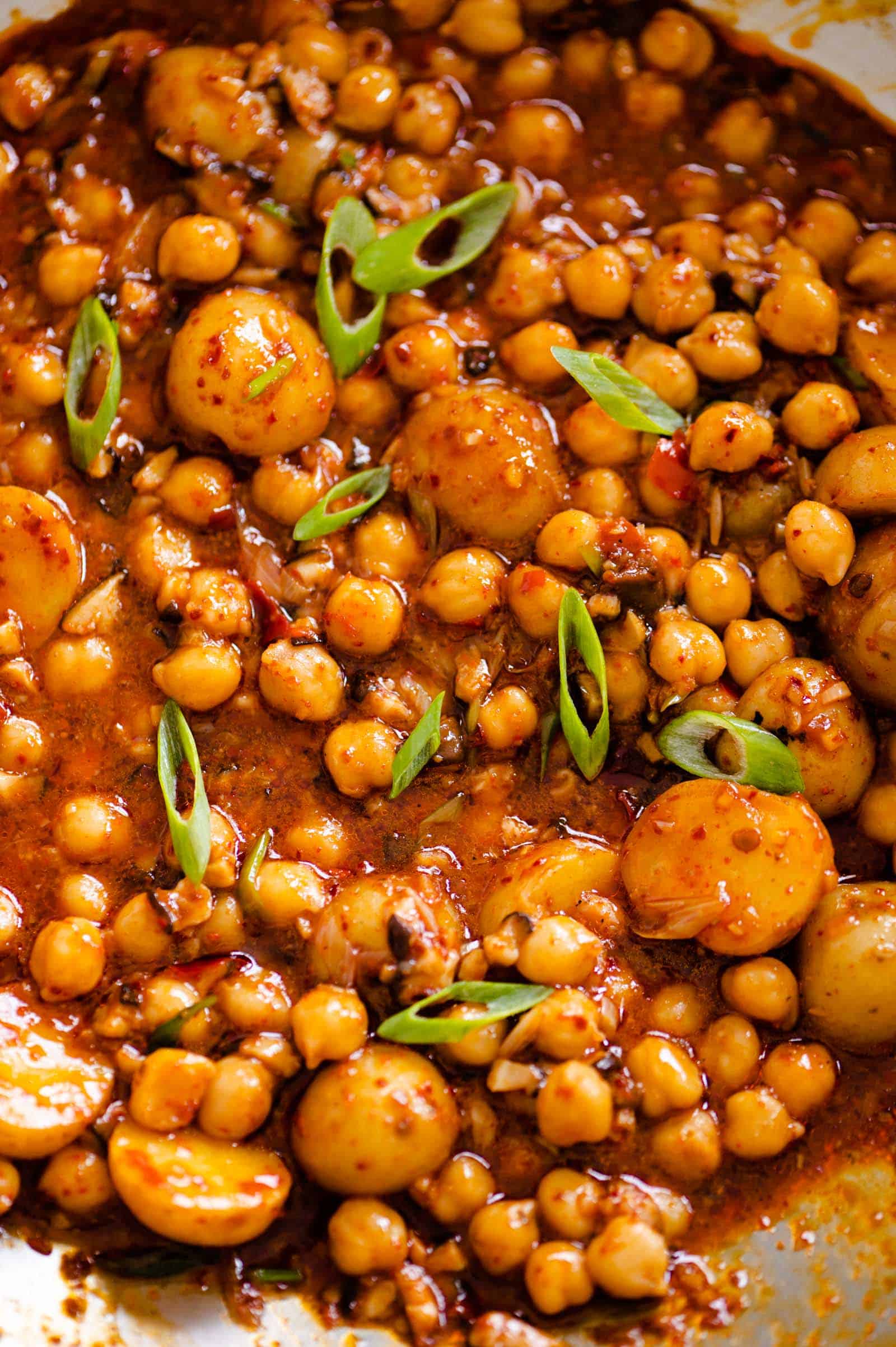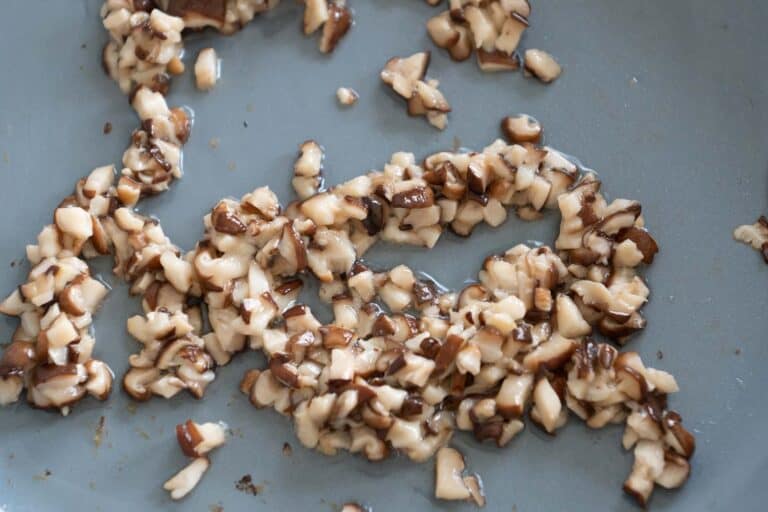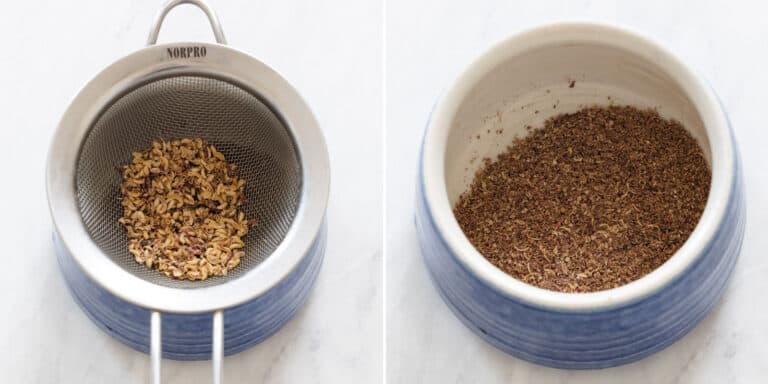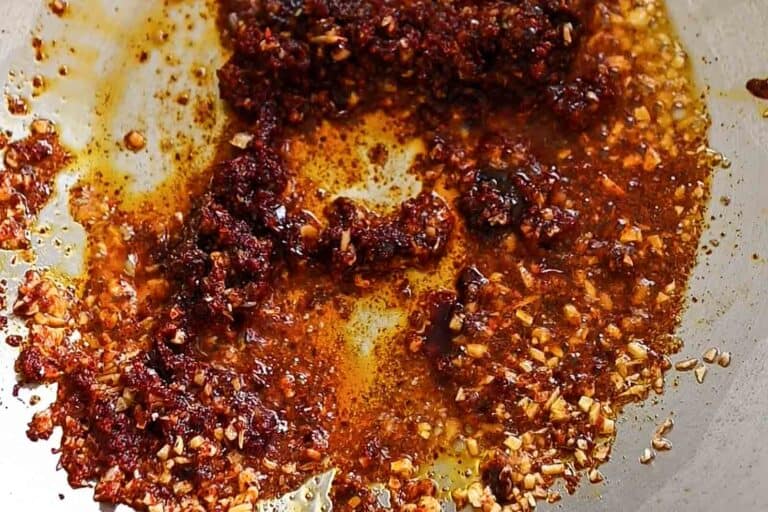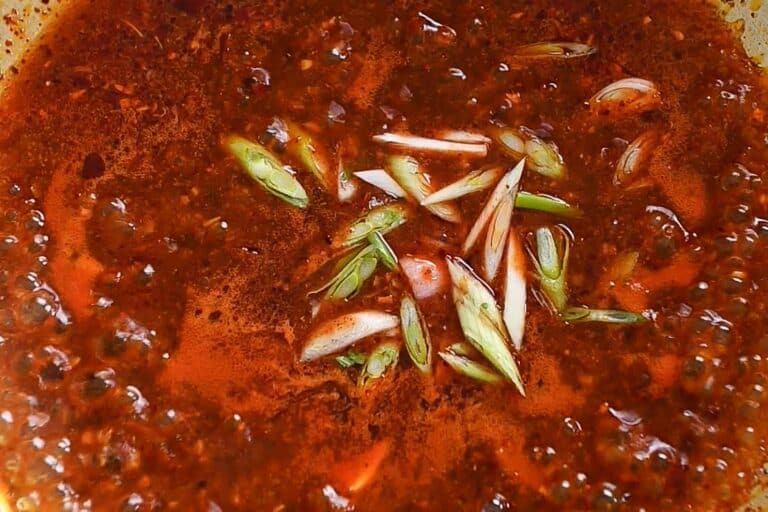Although I used chickpeas, I can see the recipe working with other beans, such as lentils, any kind of white bean, or mayocoba beans. Serve the mapo chickpeas with a side of jasmine rice, coconut rice, or cilantro lime rice (recipe below).
ORIGINS OF MAPO TOFU
As I alluded to above, this mapo chickpeas recipe is heavily adapted from my mapo tofu recipe. You can read more about the origins of mapo tofu (麻婆豆腐) and what the term “mapo” means in my mapo tofu post.
DIFFERENT BRANDS AND TYPES OF DOUBANJIANG (豆瓣醬)
One of the key ingredients in a mapo tofu dish is doubanjiang (豆瓣醬). Doubanjiang (sometimes shortened to just “douban”) is a Sichuan-style chili sauce made with fermented broad beans (aka fava beans). This thick, spicy, and salty sauce is a very common ingredient in Sichuan cuisine. Over the past few years, I’ve cooked with many different brands and types of doubanjiang and I wanted to share some notes about the ones I’ve tried.
Lee Kum Kee Chili Bean Sauce (Toban Djan)
When I go to Asian grocery stores like Ranch 99, I often find the Lee Kum Kee brand of doubanjiang (photographed above, left). While the sauce has a nice red color, the sauce doesn’t have quite the complex flavors I’d expect from doubanjiang. It’s not as spicy as I’d like and the flavor of the fermented beans isn’t strong enough. However, I do like the loose consistency of the sauce, which makes it easy to use for everyday cooking.
Zhuang Yuan
Another brand I see in Asian grocery stores is Zhuangyuan (莊元), which is based in Taiwan. They have a spicy and non-spicy version of doubanjiang, photographed above. Their doubanjiang has a strong fermented bean flavor, making it more complex compared to Lee Kum Kee. The spicy version still isn’t quite as spicy as some of the Sichuan-produced doubanjiang I’ve tried in the past, but it has a good level of spice.
Pixian Douban (郫县豆瓣)
If you want a more traditional doubanjiang that actually comes from Sichuan Province, you’ll want to try Pixian douban (郫县豆瓣). Note that the phrase “doubanjiang” has been shortened to “douban” here. Pixian (郫县 or 郫縣 in traditional characters) is the name of a county located in Chengdu, the capital of Sichuan. Only doubanjiang that is produced in Pixian can be called 郫县豆瓣 because it is a protected geographical indication. It is similar to how the term “Champagne” can only be used to describe sparkling wine that is produced in the Champagne region of France. Geography note: In 2016, Pixian, or Pi County in English, was reclassified as an urban district and renamed as Pidu District, 郫都区. Although that region was renamed to Pidu District, the doubanjiang from that area is still called Pixian douban. There are different types of Pixian doubanjiang, the most common of which is 紅油郫县豆瓣 (pronounced hongyou pixian douban in Mandarin). The phrase 紅油 (hongyou) literally translates to “red oil” and refers to chili oil that’s present in the sauce. The hongyou-style of doubanjiang is meant for everyday use. When developing this mapo chickpea recipe, I used the hongyou Pixian douban. It has a good level of spice and a nice fermented flavor. If you also use this style of doubanjiang, 3 to 4 teaspoons of the sauce should be enough for this recipe.
Aged Pixian Douban
You can also find aged doubanjiang, like this 3-year aged Pixian douban, which has been fermented for a longer period compared to the hongyou Pixian douban. This style of doubanjiang is very thick and has a paste-like quality. Because of the longer fermentation period, the flavor of the aged doubanjiang is stronger with lots of spicy, salty, and even slightly sour notes.
WHERE TO BUY DOUBANJIANG
RED SICHUAN PEPPERCORNS (大紅袍花椒)
The key to good mapo tofu is the mala spice provided by red Sichuan peppercorns (affiliate link). When you bite into one of those peppercorns, you’ll feel a slight tingling on the tip of your tongue. In a few short moments, the tingling feeling transitions into a slight numbing sensation. It is a strangely addictive experience that is common when eating Sichuan cooking. For this recipe, you’ll want to grind the peppercorns with a mortar and pestle or a spice grinder. Once you grind the peppercorns, sift everything through a fine mesh to sift out the husks and seeds. They’re very tough to eat, so it’s better to sift them out.
WHERE TO BUY SICHUAN PEPPERCORNS
GOCHUGARU
Typically, in mapo tofu recipes, you’d add red chili flakes in addition to doubanjiang and Sichuan peppercorns. In this recipe, I add gochugaru, Korean red pepper flakes, because I love their slightly smoky flavor and the bright red color they add to the dish. The spice level of gochugaru is generally pretty mild. Feel free to use less if you are spice averse. Substitutions for Gochugaru: You can use chili flakes like the ones in the photo above. These chili flakes with seeds can be much spicier than gochugaru. If you taste some of it and detect a strong heat at the tip of your tongue, I’d start with 3/4 teaspoon of the chili flakes. Add more if you want more spice.
WHERE TO BUY GOCHUGARU
CHICKPEAS
You can use a 15.5-ounce (439g) can of chickpeas for this recipe or cook your own! I generally cook chickpeas from dried beans in an Instant Pot because it is so convenient. You can read more about how to cook chickpeas in this post. I like my chickpeas to have a slight crisp, so I usually cook them in the Instant Pot for about 22 minutes.
OTHER RECIPES USING DOUBANJIANG
If you’re wondering how to use up your jar of doubanjiang, here are a few recipe suggestions!
Mapo Tofu (also uses gochugaru)Spicy Peanut NoodlesSpicy Eggplant Stir Fry (can use gochugaru for the chili flakes)
WHAT TO SERVE WITH MAPO CHICKPEAS
Jasmine Rice, Coconut Rice, or Brown RiceChinese Smashed Cucumber SaladRoasted AsparagusChinese Garlic Green BeansGreen Papaya Salad
